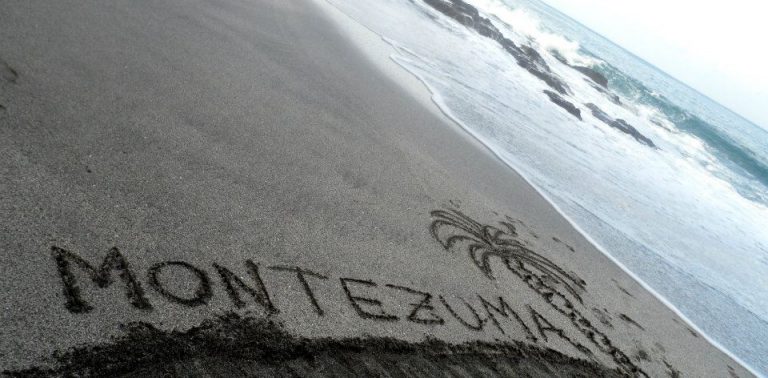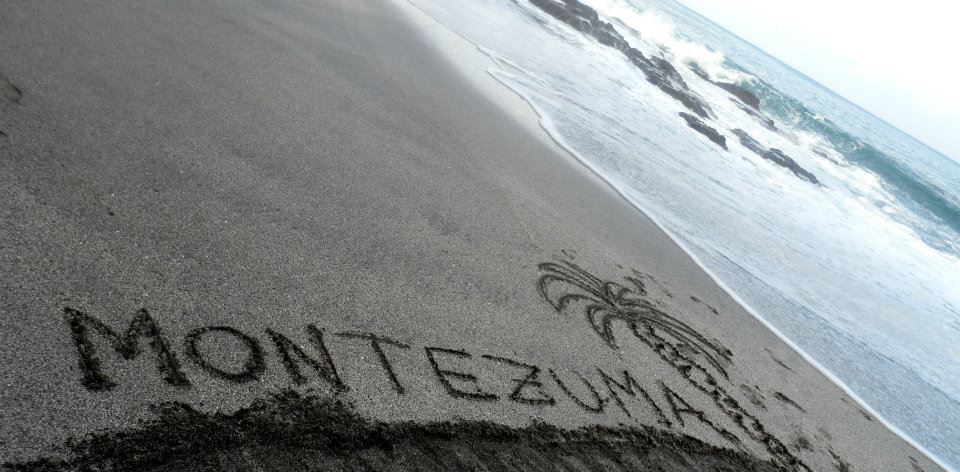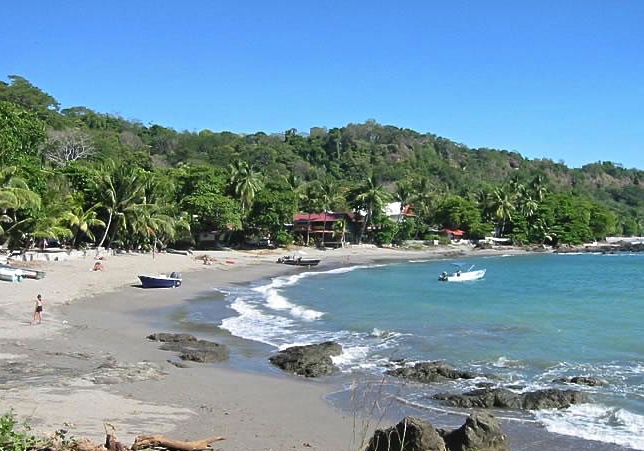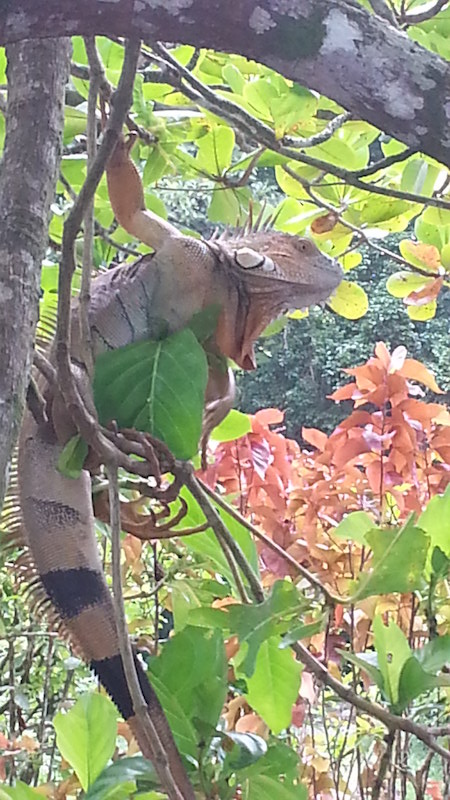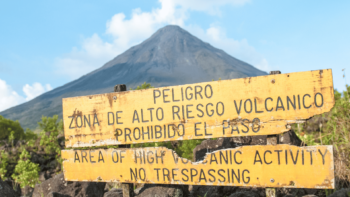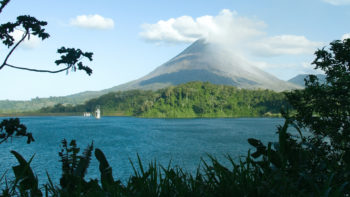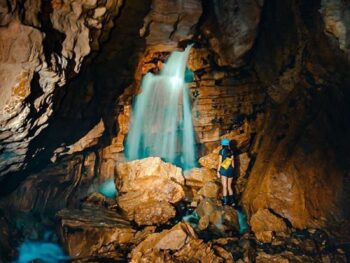Montezuma Beach is still charming
The first time I had the fortune to visit Montezuma was in 1998. I had heard about the quaint bohemian beach town from a university friend of mine who raved about the largely undiscovered paradise. He even went as far as drawing me a rough map of Costa Rica’s Nicoya Peninsula. And with a bright red star the location of Montezuma was marked on the peninsula’s southernmost tip.
He was so convincing that Montezuma was the first place my friends and I visited. Coincidentally, it has remained our most favorite niche in this small but bountiful country ever since. Due to its geographical location—a narrow beach-front town surrounded by steep mountain slopes and cliffs—Montezuma has remained relatively small and much of its original charm and beauty has not diminished. Lacking commercial space to spread out, many of the larger hotels and resorts have gone elsewhere. This leaves small boutiques hotels, backpacker hostels, and locally-owned restaurants, grocery stores, and shops in their wake. In fact, visitors can choose from a colorful assortment of B&Bs, Airbnb rentals, and eco-hotels both within the town as well as scattered around the surrounding hillsides. Stunning sunrise views of the Gulf of Nicoya and the prolific wildlife are practically guaranteed from hilltop accommodation options.
What makes this little pueblo so spectacular is much more than its small-town charm. The magic of Montezuma lies in its rugged and dramatic natural environment. Rarely can anyone discover such an abundance of nature’s beauty than here. This is due partly to the fact that the country’s seismic past has literally come to the surface of the southern peninsula, resulting in unique topography at every turn.
Don’t miss the sandy hike across beaches from the town to turtles!
For example, the popular hike from Montezuma to Playa Grande at the north end of town, takes about 30 to 45 minutes and entails traversing an amazing variety of beaches. These range from:
- Playa Montezuma is a smooth white-sanded beach interspersed with jagged volcanic rocks.
- Playa Colorada’s ochre red coarse sands with green and yellow stones are broken up by an enchanting stream and pool.
- This beach curves into a rugged, rock and tree-trunk-strewn bay with sand comprised of seashells and hermit crabs of all sizes.
- Finally, the coastline opens onto the flat and expansive, largely-deserted stretch of Playa Grande.
Getting from one beach to another requires passing the ASVO Montezuma Sea Turtle Conservation Program turtle hatching project, the small Nicolas Wessberg Absolute Nature Reserve. You walk the “Green Dream Trail”, Sendero El Sueno Verde, leading to Playa Grande beach where surfers abound and the Carey, Lora, and Leatherback turtles come to lay their eggs throughout the year.
Chasing waterfalls in Montezuma
To the southwest of town, rounding the corner from Montezuma Beach, you’ll find a well-marked trailhead leading to La Cascada waterfall. The extremely popular 20-minute hike requires some skill and willingness to traverse the Montezuma River. You’ll need to climb the steep, root-strewn trail into the tropical rainforest. Don’t be swayed, the breathtaking waterfall is well worth the effort, as is the refreshing pool at the waterfall’s base. Two additional waterfalls can be found above La Cascada, but are best experienced taking the La Cascada Canopy tour or by hiring an experienced guide. Note that the hike is not recommended during the height of the rainy season as rising river levels can be dangerous. Diving from any of the falls is also strictly prohibited due to hidden underwater boulders and other inherent dangers.
Nature conserved
Farther west of town, following the coastline, you’ll pass numerous golden-sand beaches and popular surf breaks, including Las Manchas beach and Los Cedros break – also a popular spot for fishing. Continue west and you’ll find the Cabo Blanco National Park. The park was founded by Nicolas Wessberg and his wife Karen Morgensen and is considered one of Costa Rica’s first absolute preserves. Their efforts were responsible for spearheading the country’s National Park and environmental preservation movements.
Wildlife in the area is abundant and visitors are as likely to see a huge assortment of birds, animals, and reptiles around town as they are inside a national park. White Faced Capuchin and Howler monkeys are prolific, as are iguanas, pizotes, agouti, armadillos, toucans, osprey, and a host of other species. All it requires to experience these fascinating creatures is taking a moment to rest and sit quietly in the great outdoors. Or…in some cases, eating a tasty, outdoor meal is enough to bring the monkeys and birds in for a personal visit.
Eating out and nightlife
Montezuma’s town center is equally renowned for its nightlife. During high season, tourists and locals alike often spill from the town’s two bars into the streets to flirt and dance. A vibrant artisan community adds to the ever-present bohemian air, selling their jewelry and wares in front of the local boutiques, cafes, and restaurants along the streets. Acrobatic displays and juggling fire sticks are also common and add to the town’s otherworldly charm. And don’t forget to sample the amazing variety of culinary wonders available. Montezuma’s dynamic local and international communities offer a delicious assortment of restaurants to choose from, a couple of them are even rated among the country’s best!
How to get to Montezuma
…from San Jose
- Plan for a journey of between 5 and 6 hours. Take Route 27 north towards Liberia via Orotina and Caldera, and then exit onto the ramp for Route 23 to Puntarenas.
- Be advised that Route 27 is a toll road, so you’ll require ₡3,400 in local currency (roughly $6 USD) to complete the one-way drive (depending on your point of departure).
- Catch the Naviera Tambor Ferry from Puntarenas (on the mainland) to the small port-town of Paquera. Buy your ticket in advance as the tickets sell out, especially in high season and you will have to wait several hours for the next ferry. Expect to pay around $20 or ₡11,400 for the driver and vehicle, and about $2 (₡810 colones) for adult passengers and half that price for children. Find times and more info here: Naviera Tambor (Spanish only but the timetable is very clear even if you are not fluent)
- After crossing the Gulf of Nicoya (70 minutes) take the main road (Route 160) from Paquera to Cobano. En-route you’ll pass a number of resorts and small pueblos before arriving in Cobano – the main service-town with a local bank, police station, pharmacy, supermarkets, and clinic.
- From Cobano, head due south 7 km to Montezuma. Note that roads on the southern tip of the peninsula are often unpaved and notoriously crummy, so expect longer driving times and enjoy the scenery!
…from Liberia
- Allow between 4 and 4 ½ hours for the journey along Route 21 until Paquera. Take the main road (Route 160) from Paquera to Cobano. En-route you’ll pass a number of resorts and small pueblos before arriving in Cobano – the main service-town with a local bank, police station, pharmacy, supermarkets, and clinic.
- From Cobano, head due south 7 km to Montezuma.
